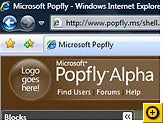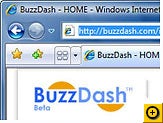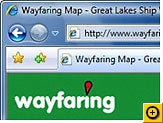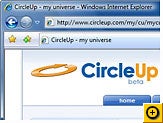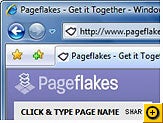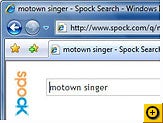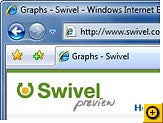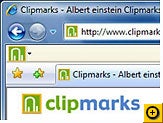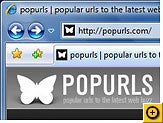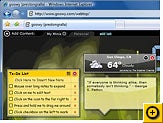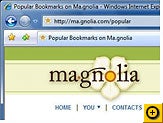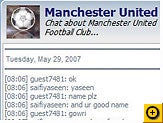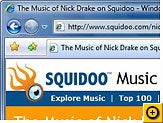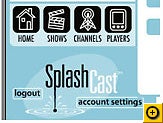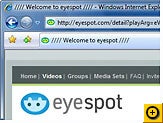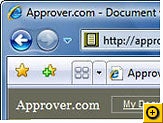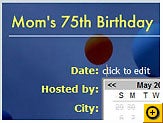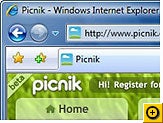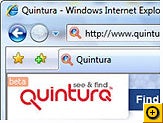Saturday, September 1, 2007
Download UbiSoft Games for Free
Download links:-
Far Cry Free version at FilePlanet
Prince of Persia: Sands of Time Free version
Rayman Raving Rabbids Free version, also at FilePlanet
Source
Saturday, August 25, 2007
Minesweeper......
Tuesday, July 31, 2007
Aussie Hacker cracks Iphone
The Iphone is not due out in Australia until sometime in 2008, but the hacker, who uploaded a video of the hack to YouTube, managed to place calls on the Telstra network. He was not able to receive phone calls, however, nor send or receive SMS messages. Although Telstra has an EDGE 2.5 network, internet access through EDGE was not possible either.
The video has subsequently been pulled from YouTube, but instructions and an account of what was and was not possible can be found over here.
The user, Ozbimmer, managed the crack by creating a custom sim card with a sim card reader and writer. Information from the AT&T and Telstra sims was combined to create the custom card that was able to allow calls out.
As he said on the forum, “this is not an unlock. The method only trick[s] the iphone [into thinking] that the genuine AT&T sim is used.” The method outlined by Ozbimmer is as follows;
1. Get the required hardware and software: (these are the ones I have used): An Infinity USB unlimited SIM reader/writer, a silvercard, SIM-EMU 6.01, and WoronScan 1.09
2. Get the IMSI, Ki of your carrier using WoronScan (I will call them IMSI-b, Ki-b)
3. Use SIM-EMU and create 2 files (1 Flash and 1 EEPROM) using the ICCID of the AT&T sim (ICCID-a), IMSI-b and Ki-b
4. Then use these 2 files to create a sim using the infinity usb unlimited reader/writer
5. Put this sim into a normal unlocked phone and make some calls/receive calls/data services
6. Then use SIM-EMU to change the IMSI of the original Flash file to IMSI of AT&T sim (IMSI-a)
7. Again write the silvercard with the new flash and eeprom files
8. Put this sim into the Iphone
9. Activate using the Cingular method as descirbe in Hacktheiphone.com
Source
Friday, July 27, 2007
McDonald’s Strange Menu Around the World
So you think you know the McDonald's menu like the back of your hand? Think again. From McDonald's international, here are some menu items you have probably never tried before.
Good morning, welcome to McDonald's. May I have your order please?
INDIA
In India, there are no Big Macs because the Hindu people don't eat beef.
However, they have the Maharaja Mac, which is a Big Mac made of lamb or chicken meat. There is also a vegetarian burger, the McAloo Tikki.

NORWAY
In fish-loving Norway, they have the McLaks, a sandwich made of grilled salmon and dill sauce.

GERMANY
It's bottoms up in Germany, where McDonald's serves - Beer!

CANADA
In parts of Canada, have a lobster dinner with the McLobster lobster roll. Pardon me - "McHomard" (in French).

JAPAN
Japan totally reinvents McDonald's with its Ebi Filet-O (shrimp burgers), Koroke Burger (mashed potato, cabbage and katsu sauce, all in a sandwich), Ebi-Chiki (shrimp nuggets) and Green Tea-flavored milkshake!

CHILE
In Chile, you can dress your burgers with - not ketchup - avocado paste!

COSTA RICA
In Costa Rica, unsurprisingly, you can order Gallo Pinto, meaning rice and beans.

GREECE
It's not Greek without pita, so when in Greece, have a Greek Mac, a burger made of patties wrapped in pita.

HONG KONG
Rice-loving Hong Kong, has - of course - Rice Burgers, where the burgers are in between, not burger buns, but two patties of glutinous rice.

ISRAEL
In Israel, McDonald's has 3 kosher restaurants where cheeseburger and dairy products are not served because Jewish Law forbids serving "the child [cow/beef] in its mother's milk [dairy]." They have McShawarma, meat in a pita bread roll.

URUGUAY
In Uruguay, they have the McHuevo, which is like a regular hamburger, but it is topped with a poached egg.

Wednesday, July 18, 2007
Windows Vista: The World's Most Expensive Spyware

By: Marius Oiaga, Technology News Editor (condensed version)
Are you using Windows Vista? Then you might as well know that the licensed operating system installed on your machine is harvesting a healthy volume of information for Microsoft. In this context, a program such as the Windows Genuine Advantage is the last of your concerns. In fact, in excess of 20 Windows Vista features and services are hard at work collecting and transmitting your personal data to the Redmond company.
Microsoft makes no secret about the fact that Windows Vista is gathering information. End users have little to say, and no real choice in the matter. The company does provide both a Windows Vista Privacy Statement and references within the End User License Agreement for the operating system. Combined, the resources paint the big picture over the extent of Microsoft's end user data harvest via Vista.
Microsoft has an additional collection of 47 Windows Vista features and services that collect user data. However, not all phone home and report to Microsoft. Although the data collection process is generalized across the list, user information is also processed and kept on the local machine, leaving just approximately 50% of the items to both harvest data and contact Microsoft. Still, Microsoft underlined the fact that the list provided under the Windows Vista Privacy Statement is by no means exhaustive, nor does it apply to all the company's websites, services and products.
Activation, Customer Experience Improvement Program (CEIP), Device Manager, Driver Protection, Dynamic Update, Event Viewer, File Association Web Service, Games Folder, Error Reporting for Handwriting Recognition, Input Method Editor (IME), Installation Improvement Program, Internet Printing, Internet Protocol version 6 Network Address Translation Traversal, Network Awareness (somewhat), Parental Controls, Peer Name Resolution Service, Plug and Play, Plug and Play Extensions, Program Compatibility Assistant, Program Properties—Compatibility Tab, Program Compatibility Wizard, Properties, Registration, Rights Management Services (RMS) Client, Update Root Certificates, Windows Control Panel, Windows Help, Windows Mail (only with Windows Live Mail, Hotmail, or MSN Mail) and Windows Problem Reporting are the main features and services in Windows Vista that collect and transmit user data to Microsoft.
This extensive enumeration is not a complete illustration of all the sources in Windows Vista that Microsoft uses to gather end user data. However, it is more than sufficient to raise serious issues regarding user privacy.
But is this all? Not even by a long shot. Windows Genuine Advantage, Windows Defender, Support Services, Windows Media Center and Internet Explorer 7 all collect and transmit user data to Microsoft. Don't want them to? Then simply turn them off, or use alternative programs when possible or stop using some services altogether. Otherwise, when your consent is demanded, you can opt for NO.
What Happens to My Data?
Only God and Microsoft know the answer to that. And I have a feeling that God is going right now "Hey, don't get me involved in this! I have enough trouble as it is trying to find out the release date for Windows Vista Service Pack 1 and Windows Seven!"
Could Microsoft turn the data it has collected against you? Of course, what did you think? "Microsoft may disclose personal information about you if required to do so by law or in the good faith belief that such action is necessary to: (a) comply with the law or legal process served on Microsoft; (b) protect and defend the rights of Microsoft (including enforcement of our agreements); or (c) act in urgent circumstances to protect the personal safety of Microsoft employees, users of Microsoft software or services, or members of the public," reveals another excerpt.
Tuesday, July 17, 2007
Seven Tech World Wonders
As you might know the list of the Seven World Wonders of Antiquity was renewed of late. The new lists features landmarks like The Roman Colosseum and The Great Wall of China and it was announced on 07.07.07. Also it seems that all the fuss about these world marvels made some people think, and a list of the Seven Wonders of the Tech World is now to be found online.
Googleplex
Of course the famous Google HQ in Mountain View, CA is on the list ( if not the first on the list ). Even with the late criticism ( if you can call it like that, considering that all they did is to ‘accuse’ Google of threating their employees too good) from Microsoft’s part, it seems the vast majority of people find Googleplex the perfect place to work. And it’s hard not to love Googleplex considering all that it provides for it’s employees. Besides flexible schedule, extremely creative environment, Google employees get not one but two swimming pools, not one but five restaurants, recreation rooms, game rooms, free laundry and salons with massage and many more recreational feats. So Googleplex is definitely worth being on the list if you ask me.
International Space Station
With projects on the Space Station dating from the early 80’s, the ISS was put on orbit in 1998 and further missions are planned as far as 2010. The ISS is as close to Sci-Fi movies as you’ll ever get at this point. Although recent troubles with computer failure seemed to endanger the future of the ISS, all is now working fine. The goal of the ISS is to serve as a starting points for missions to the Moon and Mars.
Fremont Street Experience
I just have to say Vegas and you’ll know that I’m talking about top notch entertainment. And that’s exactly what the Viva Vision canopy provides. It’s made of 12 mil LED’s that cover more around 1400 feet and if you add to that 220 speakers producing a total of 550,000 watts you’ll get one of the biggest entertainment systems in the world.
Industrial Light & Magic
If you’ve seen movies like Star Wars, Pirate of the Caribbean or Transformers it’s very probable that you’ve heard the name Industrial Light and Magic. They’re the guys behind all the special effects in those movies and many more. But to be on the cutting edge of digital effects you have to be on the cutting edge of hardware processing equipment. Thus we have the ILM datacenter, that shelters more than 3000 processors, 170 terabytes of storage all connected by a 10 GB backbone.
Apple’s Retail Opus
Located in Manhattan, New York this is the first Apple store to stay open 24/7 ( so if you feel to buy an iPhone at 2 A.M in the morning you can just go ahead and do it ). Many say the clean, classy design is the most popular visual representation of what Apple is today. Besides is for sure one of the classiest retail stores in the world. You can get the virtual tour here.
Kryptos
Although is not directly related with the tech world, it’s a mystery that haunted the tech world even since it was placed on CIA ground in 1990. It contains four encrypted messaged of which three were solved. And it is said that when the fourth will be deciphered it will point the location of something of great importance located on CIA grounds.
Hubble Space Telescope
And last but not least the Hubble Space Telescope, that was launched in 1990 and orbits the Earth at five miles per second. It’s position outside Earth’s atmosphere offers a clear view of the stars. Hubble is one of NASA’s most enduring projects and also one of the most productive. Until now Hubble has provided hundred of thousands of photos from the outer space, which helped us unveil some of space’s deepest secrets.
Friday, July 13, 2007
75 year old Woman has world's fastest home broadband
Sigbritt Löthberg's has a 40 gigabits per second connection which is the first time ever that a home user had such bandwidth to play with.
Sigbritt, who had never had a computer until now, happens to be the mum of local internet legend Peter Löthberg who, along with Karlstad Stadsnät, the local council's network arm, arranged the connection.
Karlstad Stadsnät network boss Hafsteinn Jonsson said that this was more than just a demonstration. He was trying to get internet operators to invest in faster connections. And Peter Löthberg wanted to show how you can build a low price, high capacity line over long distances.
According to the Local, the silver surfer will be able to flick through 1,500 high definition HDTV channels simultaneously or download a full high definition DVD in just two seconds.
The ultra-fast connection is possible thanks to a modulation technique which allows data to be transferred directly between two routers up to 2,000 kilometres apart, with no intermediary transponders. Apparently the most difficult part of the project was installing Windows on Löthberg's PC.
It is not clear what Löthberg thought about the connection, or if she will even use it.
Thursday, July 12, 2007
Spy Shots: 2008 GT-R prototype at Goodwood FOS


Visitors at this month’s Goodwood Festival of Speed were treated with a rare sighting of the 2008 GT-R Prototype, with test drivers doing a couple of laps to entertain the crowd. The Goodwood festival has definitely proven itself to be one of the most exciting car shows of the year, with automotive specials such as world’s fastest production vehicle, the Acabion GTBO, the 1012bhp Bristol Fighter T, the one-off Pininfarina Ferrari P4/5 Enzo and the RUF CT3 all making a showing.
Due to be unveiled at the Tokyo Motorshow later this year, the GT-R will be packing Nissan’s new 3.7L V6 with VVEL technology and a couple of turbochargers to lift output beyond 450hp. Drive will be sent to all four wheels via the latest iteration of the ATTESA ET-S torque-sensing AWD system plus a new sequential manual Gearbox or a possible dual-clutch system.
Nissan is expected to release the GT-R in three different flavors, the standard model, a new GTR V-Spec and a range-topping EVO. The latter will shed up to 100kg over the first two models thanks to carbon-fiber replacements for some panels and mechanicals, and should develop in excess of 500hp.Source
Monday, July 9, 2007
10 Stunning Facts About Microsoft’s Profits
The VAR Guy has written extensively about Microsoft’s problems. But today, he got a stunning reminder about the company’s power. It takes Microsoft only 10 hours of business to exceed Red Hat’s entire quarterly profit. Skeptical? Check out the math, and nine other facts about Microsoft’s profits.
Microsoft today announced quarterly revenue of $14.4 billion and net income of $4.93 billion. In other words, Microsoft’s daily net income is about $55 million. That’s $55 million in pure profit every 24 hours. Do some quick math and you’ll learn it takes Microsoft only about…
- 10 hours or so (yes, hours!) to exceed Red Hat’s quarterly net income of $20.5 million.
- four days to exceed Research In Motion’s quarterly net income of $187.9 million.
- four days to exceed Starbucks’ quarterly net income of $205 million.
- one week to exceed Nike’s quarterly net income of $350.8 million.
- two weeks to exceed McDonalds’ quarterly net income of $762 million.
- two weeks to exceed Apple’s quarterly net income of $770 million.
- 18 days to exceed Google’s quarterly net income of $1 billion.
- 23 days to exceed Coca-Cola’s quarterly net income of $1.26 billion.
- five weeks to exceed IBM’s quarterly net income of $1.85 billion.
- 10 weeks to exceed Wal-Mart’s quarterly net income of $3.9 billion.
For a dead company, Microsoft’s profits certainly look lively.
SourceSaturday, July 7, 2007
Apple's Iphone HACKED
I’ve found a way to activate a brand new unactivated iPhone without giving any of your money or personal information to NSA AT&T. The iPhone does not have phone capability, but the iPod and WiFi work. Stay tuned!
Update:
Magic iTunes 7.3.0.54 numbers:
Offset 2048912: 33C0C3
Offset 257074: 28
Offset 257013: 33C9B1
Add “127.0.0.1 albert.apple.com” to c:\windows\system32\drivers\etc\hosts
Download Phone Activation Server v1.0 to activate your iPhone for iPod+WiFi use. Note that this application will not do anything unless you understand the magic numbers as well as add the hosts entry. Phone Activation Server (PAS) requires that you have the MS .NET Framework 2.0 installed.
Download PAS v1.0 Source Code.
Source
Monday, July 2, 2007
Google: A Hacker's Best Friend?

When Johnny Long wants information online, he turns to the same tool as most people: Google. But unlike the average Web user, Long isn't usually looking for Paris Hilton news and movie reviews. He's digging for credit card information, Social Security numbers and other private data stashed on corporate servers.
Long isn't a cyber-criminal--he just plays one in his day job, as a researcher for the information technology services company Computer Sciences (nyse: CSC - news - people ). But he is a hacker, one with a talent for innovating new ways to penetrate corporate servers, albeit for testing purposes only. He's also the author of Google Hacking for Penetration Testers, a best-selling book that shows how to use seemingly harmless Google (nasdaq: GOOG - news - people ) searches to uncover surprisingly sensitive information.
Long spoke with Forbes.com about his forthcoming book, a more general kind of "Hacking for Dummies" guide to hacking without technical knowledge, and the tricky question of whether to publicize hacking techniques that require little more than a search engine and two hands.
Forbes: What is "Google hacking"?
Long: Google hacking is really just a subset of something I call "no-tech hacking." You use un-technological methods to break technology. After 10 years of trying, I've discovered a whole pile of ways to do that. Dumpster diving (looking in office trash for security information); tailgating someone into a secured facility; pretending to be a UPS guy or a repair guy or a delivery guy ... these things work almost all the time and require very little technical knowledge.
So where does Google come in?
In the beginning, we'd use Google to case the companies we'd be trying to penetrate. But we discovered that the Google searches we were running were returning more information about the company than they might realize. Just by doing a search on a Web site, we'd find a password or usernames that would grant us access.
Google hacking grew out of that. You perform a Google search looking for sensitive information that either gives direct access to a network, or something subtle that could be used in conjunction with other finds.
What kinds of vulnerabilities in Web sites have you found through Google hacking?
We have examples where you can put in a Google query and immediately get access to part of a site that already has you logged in as an administrator. We discovered that just by searching for certain terms, you could find personal information like credit card numbers, Social Security numbers, anything an attacker would need for identify theft. On some education institution sites, we'd find entire Excel spreadsheets with students' names, Social Security numbers and even grades. But that's low-hanging fruit.
Without getting too technical, what's an example of a more subtle case, where you combine Google hacking with more advanced hacking?
For example, Google can help you find where an SQL server is vulnerable. SQL is basically the language of databases. Just by putting the right terms into a form on the Web, like a registration form on a site, you can do something called "SQL injection." Basically, your input into the form is confused with SQL code, and that can allow you to read data directly from a database, simply by typing into a Web login form.
Google allows you to find those vulnerabilities. If you type "MySQL error with query" into Google, some of the results will tell you which Web sites have had this error message, and that's the first step to an SQL injection. It's a nice way to do reconnaissance. It probes the Web very broadly without interacting directly with any target site, so it's difficult to detect.
Is Google becoming a more powerful tool for hackers?
Search engine popularity in general has been growing. But more importantly, the Web 2.0 movement means that everything is moving out to the Web. There's an absolute explosion of corporate and personal information out there.
Do you worry about the ethics of publicly discussing these tricks?
It's a huge debate in our industry. There are two camps: One camp says that when you talk about vulnerabilities you give bad guys ideas, but another camp says that you're helping good guys protect against bad guys. In the case of Google hacking, certain queries, like credit card queries, are very deadly stuff. So I've never talked about how to do a credit card query, though I've talked about the risk. It's a very fine line. I have to leave out enough information to avoid getting someone into trouble, but give the audience an idea of what's going on. So I always try to think about what it would mean to be on the other side of getting hacked, and I keep my professional clients in mind.
Thursday, June 28, 2007
Nikola Tesla - The man who invented the modern world
Go check your encyclopedia to find the answers to the following questions: (answers are given in parentheses)
1) Who invented the radio? (Marconi)
2) Who discovered X-rays? (Roentgen)
3) Who invented the vacuum tube amplifier? (de Forest)
In fact, while you're at it, check to see who discovered the fluorescent bulb, neon lights, speedometer, the automobile ignition system, and the basics behind radar, electron microscope, and the microwave oven.
Chances are that you will see little mention of a guy named Nikola Tesla, the most famous scientist in the world at the turn of the century.
In fact, few people today have ever heard of the guy. Good old Tommy Edison made sure of that.
After all, Tesla was considered an eccentric who talked of death rays that could destroy 10,000 airplanes at a distance of 250 miles, claimed to be able split the Earth in two, believed that both voice and image could be transmitted through the air (in the late 1800's), and essentially told Edison to take his DC electrical system and stick it you know where.
In other words, anyone that has even heard of Tesla probably considers him to be a first class wacko.
But, the times are a changin'.
The problem is that Tesla probably could do all these things that he claimed were possible. In fact, Tesla invented every single one of the items listed above (but gets no credit) and much more. Look around you and chances are Tesla is somehow responsible for most of the things that make modern life so modern.
No doubt about it, Nikola Tesla is the greatest mind since da Vinci.
So who is this genius?
Little Nicky Tesla was born in Smijlan, Croatia way back in 1856. He had an extraordinary memory and spoke six languages. He spent four years at the Polytechnic Institute at Gratz studying math, physics, and mechanics.
What made Tesla great, however, was his amazing understanding of electricity. Remember that this was a time when electricity was still in its infancy. The lightbulb hadn't even been invented yet.
When Tesla first came to the United States in 1884, he worked for Thomas Edison. Edison had just patented the lightbulb, so he needed a system to distribute electricity.
Edison had all sorts of problems with his DC system of electricity. He promised Tesla big bucks in bonuses if he could get the bugs out of the system. Tesla ended up saving Edison over $100,000 (millions of $$$ by today's standards), but Edison refused to live up to his end of the bargain.
Tesla quit and Edison spent the rest of his life trying to squash Tesla's genius (and the main reason Tesla is unknown today).
Tesla devised a better system for electrical transmission - the AC (alternating current) system that we use in our homes today. AC offered great advantages over the DC system. By using Tesla's newly developed transformers, AC voltages could be stepped up and transmitted over long distances through thin wires. DC could not (requiring a large power plant every square mile while transmitting through very thick cables).
Of course, a system of transmission would be incomplete without devices to run on them. So, he invented the motors that are used in every appliance in your house. This was no simple achievement - scientists of the late 1800's were convinced that no motor could be devised for an alternating current system, making the use of AC a waste of time. After all, if the current reverses direction 60 times a second, the motor will rock back and forth and never get anywhere. Tesla solved this problem easily and proved everyone wrong.
He was using fluorescent bulbs in his lab some forty years before industry "invented" them. At World's Fairs and similar exhibitions, he took glass tubes and molded them into the shapes of famous scientists' names - the first neon signs that we see all around us today. I almost forgot - Tesla designed the world's first hydroelectric plant, located in Niagara Falls. He also patented the first speedometer for cars.
Word began to spread about his AC system and it eventually reached the ears of one George Westinghouse.
Tesla signed a contract with Westinghouse under which he would receive $2.50 for each kilowatt of AC electricity sold.
Suddenly, Tesla had the cash to start conducting all the experiments he ever dreamed of.
But Edison had too much money invested in his DC system, so Tommy did his best to discredit Tesla around every turn. Edison constantly tried to show that AC electricity was far more dangerous than his DC power.
Tesla counteracted by staging his own marketing campaign. At the 1893 World Exposition in Chicago (attended by 21 million people), he demonstrated how safe AC electricity was by passing high frequency AC power through his body to power light bulbs. He then was able to shoot large lightning bolts from his Tesla coils to the crowd without harm. Nice trick!
When the royalties owed to Tesla started to exceed $1 million, Westinghouse ran into financial trouble. Tesla realized that if his contract remained in effect, Westinghouse would be out of business and he had no desire to deal with the creditors. His dream was to have cheap AC electric available to all people. Tesla took his contract and ripped it up! Instead of becoming the world's first billionaire, he was paid $216,600 outright for his patents.
In 1898, he demonstrated to the world the first remote controlled model boat at Madison Square Garden. So you can thank Tesla for the invention of those remote controlled planes, cars, and boats (and televisions!), also.
Tesla had a dream of providing free energy to the world. In 1900, backed by $150,000 from financier J.P. Morgan, Tesla began construction of his so called "Wireless Broadcasting System" tower on Long Island, New York. This broadcasting tower was intended to link the world's telephone and telegraph services, as well as transmit pictures, stock reports, and weather information worldwide. Unfortunately, Morgan cut funding when he realized that it meant FREE energy for the world.
Many stories claim that the U. S. government destroyed the tower during World War One for fear that the German u-boat spies would use the tower as a landmark to navigate by. In reality, Tesla ran into financial trouble after Morgan cut funding for the project and the tower was sold for scrap to pay off creditors.
The world thought he was nuts - after all, transmission of voice, picture, and electricity was unheard of at this time.
What they didn't know was that Tesla had already demonstrated the principles behind radio nearly ten years before Marconi's supposed invention. In fact, in 1943 (the year Tesla died), the Supreme Court ruled that Marconi's patents were invalid due to Tesla's previous descriptions. Still, most references do not credit Tesla with the invention of radio. (Sidenote: Marconi's radio did not transmit voices - it transmitted a signal - something Tesla had demonstrated years before.)
At this point, the press started to exaggerate Tesla's claims.
Tesla reported that he had received radio signals from Mars and Venus. Today we know that he was actually receiving the signals from distant stars, but too little was known about the universe at that time. Instead, the press had a field day with his "outrageous" claims.
In his Manhattan lab, Tesla made the earth into an electric tuning fork. He managed to get a steam-driven oscillator to vibrate at the same frequency as the ground beneath him (like Ella Fitzgerald breaking the glass with her voice in those old Memorex commercials).
The result? An earthquake on all the surrounding city blocks. The buildings trembled, the windows broke, and the plaster fell off the walls.
Tesla contended that, in theory, the same principle could be used to destroy the Empire State Building or even possibly split the Earth in two. Tesla had accurately determined the resonant frequencies of the Earth almost 60 years before science could confirm his results.
Don't think he didn't attempt something like splitting the Earth open (well, sort of).
In his Colorado Springs lab in 1899, he sent waves of energy all the way through the Earth, causing them to bounce back to the source (providing the theory for today's accurate earthquake seismic stations). When the waves came back, he added more electricity to it.
The result? The largest man-made lightning bolt ever recorded - 130 feet! - a world's record still unbroken!
The accompanying thunder was heard 22 miles away. The entire meadow surrounding his lab had a strange blue glow, similar to that of St. Elmo's Fire.
But, this was only a warm-up for his real experiment! Unfortunately, he blew out the local power plant's equipment and he was never able to repeat the experiment.
At the beginning of World War I, the government desperately searched for a way to detect German submarines. The government put Thomas Edison in charge of the search for a good method. Tesla proposed the use of energy waves - what we know today as radar - to detect these ships. Edison rejected Tesla's idea as ludicrous and the world had to wait another 25 years until it was invented.
His reward for a lifetime of creativity? The prized (to everyone but Tesla) Edison Medal! A real slap in the face after all the verbal abuse Tesla took from Edison.
The stories go on and on.
Industry's attempt (obviously very successful) to purge him from the scientific literature had driven him into exile for nearly twenty years. Lacking capital, he was forced to place his untested theories into countless notebooks.
The man who invented the modern world died nearly penniless at age 86 on January 7, 1943. More than two thousand people attended his funeral.
In his lifetime, Tesla received over 800 different patents. He probably would have exceeded Edison's record number if he wasn't always broke - he could afford very few patent applications during the last thirty years of his life.
Unlike Edison, Tesla was an original thinker whose ideas typically had no precedent in science. Unfortunately, the world does not financially reward people of Tesla's originality. We only award those that take these concepts and turn them into a refined, useful product.
Scientists today continue to scour through his notes. Many of his far flung theories are just now being proven by our top scientists. For example, the Tesla bladeless disk turbine engine that he designed, when coupled with modern materials, is proving to be among the most efficient motors ever designed. His 1901 patented experiments with cryogenic liquids and electricity provide the foundation for modern superconductors. He talked about experiments that suggested particles with fractional charges of an electron - something that scientists in 1977 finally discovered - quarks!
Wow!
Maybe history will finally recognize a true genius when it sees one.
Source
Tuesday, June 26, 2007
Worlds Fastest Street Legal Car runs Zero to 60 in 1 Second
Monday, June 25, 2007
Model front desk worker
Sunday, June 24, 2007
Top 12 Ways to Speed Up Your Computer
Thankfully, there are a number of things you can do before calling in the repair man. Here are 12 of the top ways to speed up your computer.
- Defragment your computer. The defrag tool can be found by going to the start menu, to programs, accessories, system tools and then clicking on the defragementation tool. It may take several hours to properly defrag a hard drive, especially if you haven't done it in a while. However, the resulting gain in speed will be well worth it.
- Add additional memory. Adding RAM to your system is one of the best ways to speed up your computer.
- Clear your Internet cache for faster browsing speeds.
- Delete your cookies.
- Use keyboard shortcuts.
- Empty your Temp Directory on a regular basis.
The temp directory can quickly fill up with hundreds of temp files over time, which can slow things down immensely.
To delete Temp files, you must first make sure that NO programs are open. If you are using Windows 95, 98 or Me, go to C:WindowsTemp and delete everything inside the Temp folder.
If you are using Windows 2000 or XP, the process is a bit trickier. First, you must make sure that you can see hidden folders. To do this, double-click on My Computer. Click on the Tools pull-down menu, and then click on Folder Options. Click on the View tab. Scroll down and click on Show Hidden Files and Folders. click Ok. Now you can go to C:Documents and SettingsUSERLocal SettingsTemp folder and delete everything there. - Install and run a good Antivirus program on a regular basis. One of the best Antivirus programs is a free piece of software called AVG Antivirus.
- Get rid of Spyware. Lots of computers have Spyware and don't even know it. Some of the warning signs include:
- computer running extremely slow for no apparent reason
- computer has been taking you to websites that you don't want to go to
- you get pop-ups even when you're not on the Internet.
If your computer has any of these symptoms, you are likely to be infected with Spyware. Some of the best solutions include AdAware SE and SpyBot Search and Destroy. - Streamline MSCONFIG. Many computers have unnecessary programs running in the background which can cause a huge decrease in performance. You can use a utility called MSCONFIG to turn off unnecessary Start Up items that are
robbing your system of memory and processing power.
To run MSCONFIG, click on the Start Menu and click on run. In the run dialog box, type msconfig and press "ok". - Uninstall unused programs and files. Let's face it. After a while, there are a number of programs and files that we simply don't use anymore. Give your computer a
performance boost and get rid of them.
To delete programs completely, you must first go to the Control Panel and click on Add or Remove Programs. - Run disk clean up. Disk clean up can be found by going to the start menu, to programs, accessories, system tools and then clicking on Disk Cleanup.
- If you're running Windows XP, turning off the fancy graphics will cause a noticeable increase in the speed up your computer. First, go to Start, Settings, Control Panel, System. You may need to "Switch to Classic Mode" to see the System applet.
Next, go to the Advanced tab. Click on the Settings button under Performance.
Select the "Adjust for best performance" radio button. Click Apply and then OK. The graphics aren't as slick, but your computer will run a lot faster.
Quick Note: For best performance, you should delete any unnecessary files before defragmenting your drives.
Kim Roach is a productivity junkie who blogs regularly at The Optimized Life. Read her articles on 50 Essential GTD Resources, How to Have a 46 Hour Day, Do You Need a Braindump, What They Don't Teach You in School, and Free Yourself From the Inbox.
Saturday, June 23, 2007
A computer so small, it fits in a wall socket

Israel Kamakawiwo'ole - Somewhere Over The Rainbow

PC World's 25 Sites to watch out for.
Mashups, Maps, and More
Build your own Web feed, poll friends and strangers, and find your way with these tools.
Popfly
If you haven't already discovered the world of mashups, Microsoft's Popfly is a good place to start. Mashups combine multiple Web-based sites or applications to produce all sorts of useful things, such as an overlay of traffic information over Google Maps. With Popfly, you can create your own mashups--and you don't have to know a lick of code to do it. Just drag prefab building blocks, connect them, and you have an instant mashup that you can add to an existing Web page or turn into its own site. For example, you can easily produce a mashup that grabs pictures from a site like Flickr and then displays them in a rotating cube.
Yahoo Pipes
Like Popfly, Yahoo Pipes lets you create your own mashups or "pipes." As with Popfly, you drag and drop prebuilt modules, and then create connections between them. But Yahoo Pipes is much harder to use than Popfly, and the way to go about building your own mashup isn't always obvious. But if you're willing to do some digging and learning, you can build very useful stuff, such as a mashup that uses Yahoo maps to show the locations of all apartments for rent in a certain neighborhood.
BuzzDash
Are foreign movies better watched with subtitles or with dubbed dialog? Is it okay to cry at work? Who is the best center fielder of all time--Willie Mays, Joe DiMaggio, Mickey Mantle, Ty Cobb, or Ken Griffey, Jr.?
If these are the kinds of issues that keep you awake at night, we have a Web site for you. BuzzDash lets you participate in, comment on, and see the results of numerous quick opinion polls. The polls are organized by topic, such as movies, football, and politicians; and if you have a burning question you want answered, you can create your own survey.
Wayfaring
If you're obsessed with cartography, wander over to Wayfaring.com. Here you can easily create personalized maps for a walking tour of London, say, or a wine-tasting trip through Napa or a pub crawl through Seattle. The site provides the tools you'll need to build annotated maps--complete with descriptions, Web links, and photos of your favorite stops--and then post them for others to view and discuss. It's fun to check out the maps other users have created. One of my favorites: a map of shipwrecks in the Great Lakes, including links to Web sites that discuss each wreck.
CircleUp
Anyone who has ever tried to organize an event--or to get a group of people to respond to a simple question like "Who can drive the kids to Little League this week?"--knows how tough it is to filter and organize the answers into coherent, usable form. That's where CircleUp comes in handy. Use this site to send an e-mail or instant message to a group of people; then wait for it to return a consolidated summary of responses to you. It's simple, it's free, and it will liberate you from the recurring feeling that you're herding cats whenever you try to coordinate an activity involving more than two people.
Organizers, Searchers and Optimizers
The Web has so much information that it's hard to keep track of everything. These sites will help you pull content together and move around the Internet more efficiently.
Pageflakes
The Web is just as chaotic as the world--but Pageflakes can organize both of them for you. This super-customizable version of a home page enables you to pick the news and information feeds you want to read, and to specify the "flakes," or applets, you want to include. Flakes let you add all sorts of cool stuff to your page--movie times, to-do lists, a notepad, e-mail, a horoscope--even sudoku or a personal blog. If you're looking for one-stop browsing, this is it.
Spock
If you spend more time than you should googling folks, you need to check out Spock.com, a search engine designed to dig up information about people. Start by typing in a name, or a search term that describe a group of people--for example, Motown Singer, or Rastafarians. The site then searches through various social networking sites such as MySpace and Friendster, along with more-general Web sites, and reports on what it finds.
For many searches, you'll get multiple categories of links. For instance, type in Barack Obama, and you'll get groupings like 'Democrat', 'Senator', and '2008 Presidential Candidate'. Click any link, and you'll find pages related to both Obama and the larger category. There are also links to photographs, tags, Obama's Wikipedia entry, his Senate site, and so on. Spock is currently in beta form (its public launch is scheduled for sometime before September), and at the moment you need an invitation to gain access to it, but with luck you can wangle one by filling out the form on the site.
Swivel
Data and graph fanatics, you have a home. Swivel, holds a mind-boggling array of charts and graphs--from a line graph illustrating the relationship between wine consumption and crime in the United States over the past 30 years to a pie chart showing the percentage breakdown of bird flu cases in 14 Asian countries. But the site's most outstanding feature is its ability to integrate different charts containing seemingly unrelated data. Want to compare the national murder rate to the cost of a first-class stamp, or to total hours of media use in U.S. households, over the same period of time? Now you can.
Clipmarks
The Internet is the best research tool in existence. That's the good news--and the bad news. Though finding information online is easy, keeping track of it all can be tough. Most people end up copying and pasting information from Web sites, printing it out, or bookmarking pages--with no good way to keep it all organized or find what they want fast.
Clipmarks solves the problem neatly by installing a toolbar that hitches on to Internet Explorer or Firefox. As you surf the Web, use the Clipmarks toolbar to clip and save sections of a page--text, graphics, and even YouTube videos. Clipping something automatically archives it under your Clipmarks profile, though you can also save it directly to your blog or send it via e-mail. You can even share your clip collections, or look at archives that other users have assembled.
OpenDNS

One reason the W eb sometimes feels poky, even when you use broadband, is the Internet's Domain Name System. When you type a URL (such as www.pcworld.com) into your browser, DNS servers must translate that alphanumeric information into a numeric IP address (such as 70.42.185.10) that Web servers and your PC can understand. Typically your ISP's DNS servers handle the translation work.
But OpenDNS speeds up the translation (called "name resolution") by handling the process on its own high-speed DNS servers. The service includes other cool time-savers, as well, such as the ability to create keyboard shortcuts. For example, instead of typing www.pcworld.com each time, you might arrange to type in the letter p and jump immediately to your favorite online destination.
Real Estate, Bookmarks, and Blogs
With these services, you can find a house, browse the Web from a single location, and make sure that your online prose never gets lost.
Trulia
There are plenty of real-estate sites on the Web, but this one comes with a twist. By combining social networking with mapping and search technology, Trulia gives you a high-tech way to find the home of your dreams. Use the different sliders and checkboxes to focus your search (price, square footage, and the all-important number of bathrooms), and Trulia will display qualifying homes that are for sale in the specified area, overlaid on a map. The site includes useful, city-specific real estate guides containing additional data on average home sale prices, most popular neighborhoods, crime statistics, and the like.
The Trulia Voices section hooks you up with other people to discuss neighborhoods, housing issues, or real estate in general. Trulia is relatively new, so that section is as yet quite sparse. But if the site gains traction, Trulia Voices may prove to be the most useful tool of all.
Tip: To view some cool time-lapse maps showing how an area (such as Las Vegas) has developed over time, hop to Trulia Hindsight.
PopURLs
If you're an information hound, you probably spend lots of time jumping from Digg to Del.icio.us to YouTube to Fark to Google News to anything-dot-com. With PopURLs, you no longer need to waste time hopping around the Internet. An aggregator of all things informative, PopURLs features massive lists of headlines, videos, blogs, and content from all of those sites, as well as plenty of others.
One nice bonus is that you can search some of the sites--Del.icio.us, Flickr, and Wikipedia, among others--straight from PopURLs. It's also easy to tweak the way PopURLs looks and works, too, including customizing the layout of the feeds so you can put the ones you view most regularly on top. The scrapbook is a particularly useful feature; just click the 'Add to Scrapbook' button next to any headline, and PopURLs will save it (and up to 19 other favorite items).
Goowy
For several years, observers have speculated that the Internet will become, in essence, a vast operating system, with applications built on top of it. To a great extent, that's the premise underlying Goowy. Create an account, and you can start building your own desktop, with applications for e-mail, contacts, instant messaging, file management, and more. You can also add prebuilt widgets, called "minis," to your desktop, for news, stocks, weather, and other tidbits of information.
Don't expect the site to replace your desktop at this point: Goowy lacks full-blown applications and doesn't access your hard drive. Still, it's a glimpse into what may be the future of the Internet.
BlogBackupOnline

If you have a blog and you aren't sure that your blog provider will always have a backup in case of a crash, head over to BlogBackupOnline pronto. The site is straightforward: Log in, enter information about your blog, and the site diligently backs it up every day (provided that you use one of the 11 supported blogging services--Blogger, Friendster, LiveJournal, Movable Type, Multiply, Serendipity, Terapad, TypePad, Vox, Windows Live Space, or WordPress). The site is also a great tool if you ever decide to move your blog from one platform to another. After you've backed up your blog, BlogBackupOnline can bring all of your old entries into the new service.
Ma.gnolia
If you're a fan of the social bookmarking site Del.i.cio.us but wish that it were a little more social--and a little less geeky--check out Ma.gnolia. As with Del.icio.us, you can save and share bookmarks and tags. But Ma.gnolia presents a far more appealing design, and it has a few nice extra talents, such as the ability to let you save snapshots of your favorite pages.
Ma.gnolia excels on the social networking front. You can join groups, share bookmarks, and browse groups and discussions for more bookmarks on topics that fascinate you. If you're strictly interested in bookmarking and tagging, Del.i.cio.us remains the best place to go. But if you want to share your findings with others, Ma.gnolia is worth a taste.
Five Ways to Create and Share
These services help you put your thoughts together and publish them on the Web, whether you're most comfortable talking, shooting video, or just typing.
Yodio
Of course your friends and family want to see all of your pictures from your Venetian vacation--but wouldn't it be better if they could also hear your voice, telling you cool details about what they're looking at, or narrating a story regarding some gondola hijinks?
Yodio lets you combine photos with sound files to create an audio postcard. To make a recording, call a special Yodio phone number and start talking (or you can record your own MP3 file and upload it). Once you've transferred photos to the site, you can add sound and publish your postcard on the Web for others to admire. The site also has a scheme for making money from your productions, though we wouldn't bet the farm on it.
Meebo Rooms
You may have heard about Meebo, the Web-based instant messaging program that lets you communicate with people over various IM services, such as AOL Instant Messenger and Yahoo. (See our review of Meebo.)
Well equally cool is Meebo's newest launch, Meebo Rooms, which lets you participate in multimedia chats. You'll find chat rooms on everything from sports to SpongeBob Squarepants, and the rooms support videos and photos that you can discuss with fellow fans. If you can't find a topic you're interested in, simply create a new room and post visuals for others to discuss. You can even embed rooms into your site or blog, and use them to lure people to your own Web destination.
Squidoo
Got an obsession or special passion you want to convey to the world? Squidoo is your ticket. Using the site's simple tools, you can build a "lens" (aka, a Web page) that includes information on any topic that's close to your heart, whether it's cats or Kafka.
A lens can be quite different from a blog. With lenses, you share links to resources, book recommendations, YouTube videos, Flickr photos, eBay auction items, and other cool Web content related to a single subject. Even if you don't build your own lens, the site is worth visiting to see what others have done. You can learn a lot more about lemonade or laptop bags than you ever thought possible.
SplashCast
For anyone who has ever dreamed of becoming a broadcast mogul, here's a quick (and free) way to get a taste of what it might be like. SplashCast lets you create your own streaming media channel that combines video, music, photos, text, narration, and RSS feeds. A wizard walks you through the steps of building your channel. Start by uploading media files from your hard drive, or point to files on other sites. Add captions, commentary, and RSS feeds, and your channel is ready to go. Once you're done finessing your channel, you can send it to friends and family, or syndicate it to blogs and social networking sites. So far, there's no way for you to make money from your channels, but the site plans to start a revenue-sharing model.
Eyespot
To create a video all you have to do is point your cell phone, digital camera, or camcorder at something, press a button, and stay focused. The result: an instant movie. What's not so easy, though, is organizing, editing, and combining your video clips to create something aesthetically pleasing. Eyespot simplifies this process. Upload your videos to the site, and then use its tools to crop and mix them either with other clips you supply or with free video from the site. You can even add effects, transitions, and titles before publishing your video mix for the world to see.
Sites for Collaborative Work and Play
Whether you're putting together an important document or an anniversary party, these services will help get everybody involved. Also, check out a snazzy online photo editor and a new way to search.
Approver.com
Anyone who has collaborated with multiple people on a document knows the true meaning of frustration. You have to distribute the file to the entire group, convince every person to review it by a certain date and time, and get them all to sign off on it. Approver.com lowers the pain quotient considerably. Upload the document you want to track, and the site routes it to everyone who needs to see it. It also lets you set deadlines for reviewing the document, and keep track of approvals and comments. Approver.com works with a number of apps, including Microsoft Office, Adobe PDF, and Open Office; alternatively, you can use the site to create documents, and have your colleagues read them online.
Pbwiki
Though the whole world seems to know about Wikipedia these days, many people and organizations don't realize how useful it can be to build their own wiki. In business settings, it's an ideal way to share information within a group. For individuals, it's perfect for planning a get-together, organizing a fan club, or sharing memories with family members. Pbwiki makes creating miniature versions of Wikipedia a breeze. The site's simple, Web-based tools are perfect for building a wiki--you don't need to have any HTML know-how--and getting others in on the editing action.
MyPunchbowl
Planning a party, but unsure of what date works best for your friends? MyPunchbowl is basically Evite with a little extra kick. Like any self-respecting online invitation site, MyPunchbowl lets you create party invitations and then track who's coming, who's not, and who has yet to respond. But the site also enables you to send pick-a-date e-mail messages to see which day works best for people, set up message boards (useful for organizing things like who's bringing the vino), and produce a map of the shindig's location using Google Maps. You can also create an after-party message board where people can share comments, photos, and videos--if, um, appropriate.
Picnik
You probably have hundreds or thousands of digital photos on your PC. And a lot of those photos would probably benefit from a little tweaking. But that doesn't mean that you have to download and install photo editing software. Picnik supplies a nice suite of tools for editing photos online. All you have to do is upload your photos, or have Picnik grab them from a site like Flickr (which doesn't have editing features), and then get to work. Picnik offers tools aplenty for performing simple editing--cleaning up red-eye or resizing photos, say--as well as doing more-extensive work, such as changing the exposure, fixing a color cast, or applying special effects.
Quintura
Quintura provides a new way for you to search for things on the Internet. When you enter a search term, Quintura returns an ordinary list of results on the right-hand side, while on the left it offers a visual map (or "cloud") of related terms. Click any of these words, and the list of results changes to encompass the new term as well, which can help you narrow your search. The process may sound clunky, but it's surprisingly effective.Alphabetical Listing
Keep an eye on these sites--you may be looking at Google 2.0. Here they are listed in alphabetical order.
- Approver.com
- BlogBackupOnline
- BuzzDash
- CircleUp
- Clipmarks
- Eyespot
- Goowy
- Ma.gnolia
- Meebo Rooms
- MyPunchbowl
- OpenDNS
- Pageflakes
- Pbwiki
- Picnik
- Popfly
- PopURLs
- Quintura
- SplashCast
- Spock
- Squidoo
- Swivel
- Trulia
- Wayfaring
- Yahoo Pipes
- Yodio
